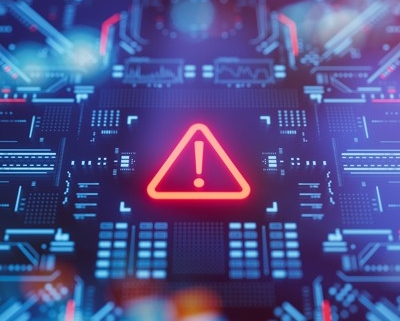SUMMARY
The Federal Bureau of Investigation (FBI), Cybersecurity and Infrastructure Security Agency (CISA), National Security Agency (NSA), Environmental Protection Agency (EPA), and the Israel National Cyber Directorate (INCD)—hereafter referred to as “the authoring agencies”—are disseminating this joint Cybersecurity Advisory (CSA) to highlight continued malicious cyber activity against operational technology devices by Iranian Government Islamic Revolutionary Guard Corps (IRGC)-affiliated Advanced Persistent Threat (APT) cyber actors.
The IRGC is an Iranian military organization that the United States designated as a foreign terrorist organization in 2019. IRGC-affiliated cyber actors using the persona “CyberAv3ngers” are actively targeting and compromising Israeli-made Unitronics Vision Series programmable logic controllers (PLCs). These PLCs are commonly used in the Water and Wastewater Systems (WWS) Sector and are additionally used in other industries including, but not limited to, energy, food and beverage manufacturing, and healthcare. The PLCs may be rebranded and appear as different manufacturers and companies. In addition to the recent CISA Alert, the authoring agencies are releasing this joint CSA to share indicators of compromise (IOCs) and tactics, techniques, and procedures (TTPs) associated with IRGC cyber operations.
Since at least November 22, 2023, these IRGC-affiliated cyber actors have continued to compromise default credentials in Unitronics devices. The IRGC-affiliated cyber actors left a defacement image stating, “You have been hacked, down with Israel. Every equipment ‘made in Israel’ is CyberAv3ngers legal target.” The victims span multiple U.S. states. The authoring agencies urge all organizations, especially critical infrastructure organizations, to apply the recommendations listed in the Mitigations section of this advisory to mitigate risk of compromise from these IRGC-affiliated cyber actors.
This advisory provides observed IOCs and TTPs the authoring agencies assess are likely associated with this IRGC-affiliated APT. For more information on Iranian state-sponsored malicious cyber activity, see CISA’s Iran Cyber Threat Overview and Advisories webpage and the FBI’s Iran Threat webpage.
For a PDF version of this CSA, see:
For a downloadable copy of IOCs, see:
TECHNICAL DETAILS
Note: This advisory uses the MITRE ATT&CK® for Enterprise framework, version 14. See Table 1 for threat actor activity mapped to MITRE ATT&CK tactics and techniques. For assistance with mapping malicious cyber activity to the MITRE ATT&CK framework, see CISA and MITRE ATT&CK’s Best Practices for MITRE ATT&CK Mapping and CISA’s Decider Tool.
Overview
CyberAv3ngers (also known as CyberAveng3rs, Cyber Avengers) is an Iranian IRGC cyber persona that has claimed responsibility for numerous attacks against critical infrastructure organizations.[1],[2],[3],[4],[5] The group claimed responsibility for cyberattacks in Israel beginning in 2020. CyberAv3ngers falsely claimed they compromised several critical infrastructure organizations in Israel.[2] CyberAv3ngers also reportedly has connections to another IRGC-linked group known as Soldiers of Solomon.
Most recently, CyberAv3ngers began targeting U.S.-based WWS facilities that operate Unitronics PLCs.[1] The threat actors compromised Unitronics Vision Series PLCs with human machine interfaces (HMI). These compromised devices were publicly exposed to the internet with default passwords and by default are on TCP port 20256.
These PLC and related controllers are often exposed to outside internet connectivity due to the remote nature of their control and monitoring functionalities. The compromise is centered around defacing the controller’s user interface and may render the PLC inoperative. With this type of access, deeper device and network level accesses are available and could render additional, more profound cyber physical effects on processes and equipment. It is not known if additional cyber activities deeper into these PLCs or related control networks and components were intended or achieved. Organizations should consider and evaluate their systems for these possibilities.
Threat Actor Activity
The authoring agencies have observed the IRGC-affiliated activity since at least October 2023, when the actors claimed credit for the cyberattacks against Israeli PLCs on their Telegram channel. Since November 2023, the authoring agencies have observed the IRGC-affiliated actors target multiple U.S.-based WWS facilities that operate Unitronics Vision Series PLCs. Cyber threat actors likely compromised these PLCs since the PLCs were internet-facing and used Unitronics’ default password. Observed activity includes the following:
- Between September 13 and October 30, 2023, the CyberAv3ngers Telegram channel displayed both legitimate and false claims of multiple cyberattacks against Israel. CyberAv3ngers targeted Israeli PLCs in the water, energy, shipping, and distribution sectors.
- On October 18, 2023, the CyberAv3ngers-linked Soldiers of Solomon claimed responsibility for compromising over 50 servers, security cameras, and smart city management systems in Israel; however, majority of these claims were proven false. The group claimed to use a ransomware named “Crucio” against servers where the webcams camera software operated on port 7001.
- Beginning on November 22, 2023, IRGC cyber actors accessed multiple U.S.-based WWS facilities that operate Unitronics Vision Series PLCs with an HMI likely by compromising internet-accessible devices with default passwords. The targeted PLCs displayed the defacement message, “You have been hacked, down with Israel. Every equipment ‘made in Israel’ is Cyberav3ngers legal target.”
INDICATORS OF COMPROMISE
See Table 1 for observed IOCs related to CyberAv3nger operations.
Table 1: CyberAv3nger IOCs
|
Indicator
|
Type
|
Fidelity
|
Description
|
|
BA284A4B508A7ABD8070A427386E93E0
|
MD5
|
Suspected
|
MD5 hash associated with Crucio Ransomware
|
|
66AE21571FAEE1E258549078144325DC9DD60303
|
SHA1
|
Suspected
|
SHA1 hash associated with Crucio Ransomware
|
|
440b5385d3838e3f6bc21220caa83b65cd5f3618daea676f271c3671650ce9a3
|
SHA256
|
Suspected
|
SHA256 hash associated with Crucio Ransomware
|
|
178.162.227[.]180
|
IP address
|
|
|
|
185.162.235[.]206
|
IP address
|
|
|
MITRE ATT&CK TACTICS AND TECHNIQUES
See Table 2 for referenced threat actor tactics and techniques in this advisory.
Table 2: Initial Access
|
Technique Title
|
ID
|
Use
|
|
Brute Force Techniques
|
T1110
|
Threat actors obtained login credentials, which they used to successfully log into Unitronics devices and provide root-level access.
|
MITIGATIONS
The authoring agencies recommend critical infrastructure organizations, including WWS sector facilities, implement the following mitigations to improve your organization’s cybersecurity posture to defend against CyberAv3ngers activity. These mitigations align with the Cross-Sector Cybersecurity Performance Goals (CPGs) developed by CISA and the National Institute of Standards and Technology (NIST). The CPGs provide a minimum set of practices and protections that CISA and NIST recommend all organizations implement. CISA and NIST based the CPGs on existing cybersecurity frameworks and guidance to protect against the most common and impactful threats, tactics, techniques, and procedures. Visit CISA’s Cross-Sector Cybersecurity Performance Goals for more information on the CPGs, including additional recommended baseline protections.
Note: The below mitigations are based on threat actor activity against Unitronics PLCs but apply to all internet-facing PLCs.
Network Defenders
The cyber threat actors likely accessed the affected devices—Unitronics Vision Series PLCs with HMI—by exploiting cybersecurity weaknesses, including poor password security and exposure to the internet. To safeguard against this threat, the authoring agencies urge organizations to consider the following:
Immediate steps to prevent attack:
- Change all default passwords on PLCs and HMIs and use a strong password. Ensure the Unitronics PLC default password is not in use.
- Disconnect the PLC from the public-facing internet.
Follow-on steps to strengthen your security posture:
- Implement multifactor authentication for access to the operational technology (OT) network whenever applicable.
- If you require remote access, implement a firewall and/or virtual private network (VPN) in front of the PLC to control network access. A VPN or gateway device can enable multifactor authentication for remote access even if the PLC does not support multifactor authentication.
- Create strong backups of the logic and configurations of PLCs to enable fast recovery. Familiarize yourself with factory resets and backup deployment as preparation in the event of ransomware activity.
- Keep your Unitronics and other PLC devices updated with the latest versions by the manufacturer.
- Confirm third-party vendors are applying the above recommended countermeasures to mitigate exposure of these devices and all installed equipment.
In addition, the authoring agencies recommend network defenders apply the following mitigations to limit potential adversarial use of common system and network discovery techniques, and to reduce the impact and risk of compromise by cyber threat actors:
- Reduce risk exposure. CISA offers a range of services at no cost, including scanning and testing to help organizations reduce exposure to threats via mitigating attack vectors. CISA Cyber Hygiene services can help provide additional review of organizations’ internet-accessible assets. Email [email protected] with the subject line, “Requesting Cyber Hygiene Services” to get started.
Device Manufacturers
Although critical infrastructure organizations using Unitronics (including rebranded Unitronics) PLC devices can take steps to mitigate the risks, it is ultimately the responsibility of the device manufacturer to build products that are secure by design and default. The authoring agencies urge device manufacturers to take ownership of the security outcomes of their customers by following the principles in the joint guide Shifting the Balance of Cybersecurity Risk: Principles and Approaches for Secure by Design Software, primarily:
- Do not charge extra for basic security features needed to operate the product securely.
- Support multifactor authentication, including via phishing-resistant methods.
By using secure by design tactics, software manufacturers can make their product lines secure “out of the box” without requiring customers to spend additional resources making configuration changes, purchasing tiered security software and logs, monitoring, and making routine updates.
For more information on common misconfigurations and guidance on reducing their prevalence, see joint advisory NSA and CISA Red and Blue Teams Share Top Ten Cybersecurity Misconfigurations. For more information on secure by design, see CISA’s Secure by Design and Default webpage and joint guide.
VALIDATE SECURITY CONTROLS
In addition to applying mitigations, the authoring agencies recommend exercising, testing, and validating your organization’s security program against the threat behaviors mapped to the MITRE ATT&CK for Enterprise framework in this advisory. The authoring agencies recommend testing your existing security controls inventory to assess how they perform against the ATT&CK techniques described in this advisory.
To get started:
- Select an ATT&CK technique described in this advisory (see Table 2).
- Align your security technologies against the technique.
- Test your technologies against the technique.
- Analyze your detection and prevention technologies’ performance.
- Repeat the process for all security technologies to obtain a set of comprehensive performance data.
- Tune your security program, including people, processes, and technologies, based on the data generated by this process.
The authoring agencies recommend continually testing your security program, at scale, in a production environment to ensure optimal performance against the MITRE ATT&CK techniques identified in this advisory.
RESOURCES
REPORTING
All organizations should report suspicious or criminal activity related to information in this CSA to CISA via CISA’s 24/7 Operations Center ([email protected] or 888-282-0870). The FBI encourages recipients of this document to report information concerning suspicious or criminal activity to their local FBI field office or IC3.gov. For NSA client requirements or general cybersecurity inquiries, contact [email protected].
Additionally, the WaterISAC encourages members to share information by emailing [email protected], calling 866-H2O-ISAC, or using the online incident reporting form. State, local, tribal, and territorial governments should report incidents to the MS-ISAC ([email protected] or 866-787-4722).
REFERENCES
- CBS News: Municipal Water Authority of Aliquippa hacked by Iranian-backed cyber group
- Industrial Cyber: Digital Battlegrounds – Evolving Hybrid Kinetic Warfare
- Bleeping Computer: Israel’s Largest Oil Refinery Website Offline After DDoS Attack
- Dark Reading: Website of Israeli Oil Refinery Taken Offline by Pro-Iranian Attackers
- X: @CyberAveng3rs
DISCLAIMER
The information in this report is being provided “as is” for informational purposes only. The authoring agencies do not endorse any commercial entity, product, company, or service, including any entities, products, or services linked within this document. Any reference to specific commercial entities, products, processes, or services by service mark, trademark, manufacturer, or otherwise, does not constitute or imply endorsement, recommendation, or favoring by the authoring agencies.
VERSION HISTORY
December 1, 2023: Initial version.



